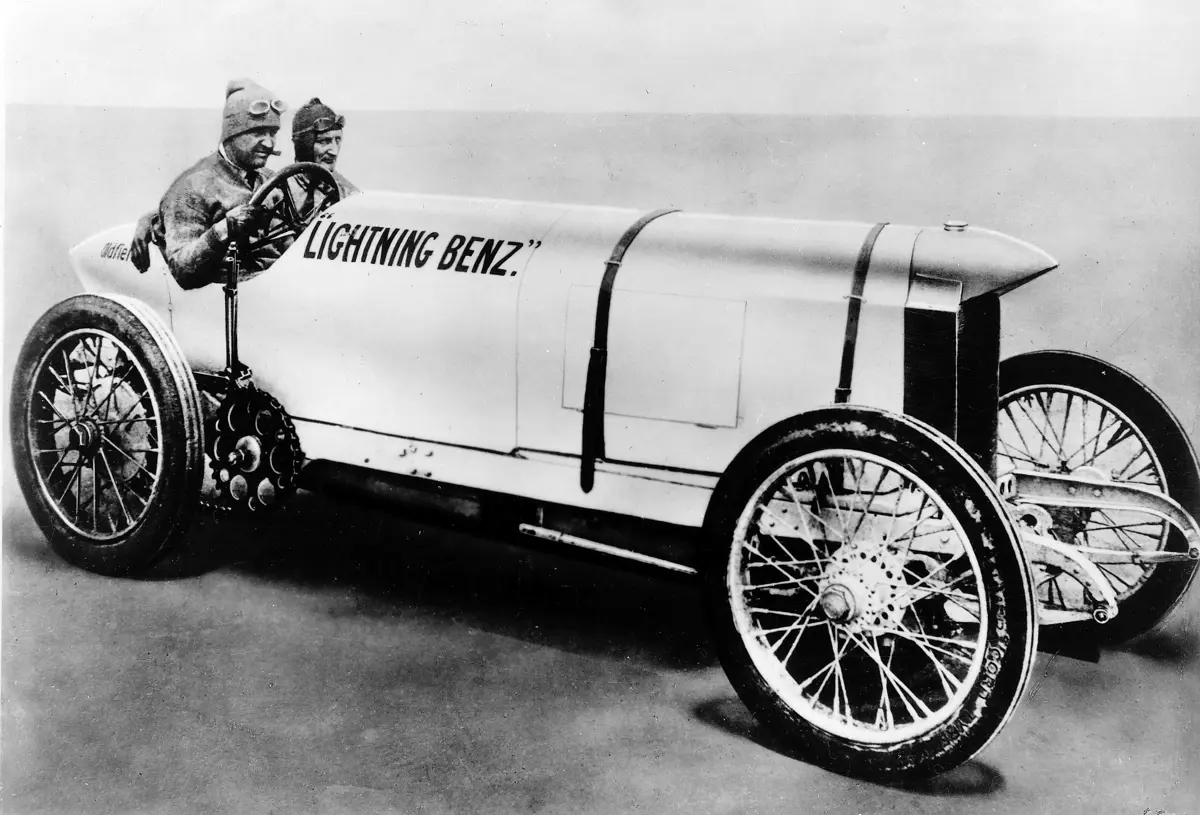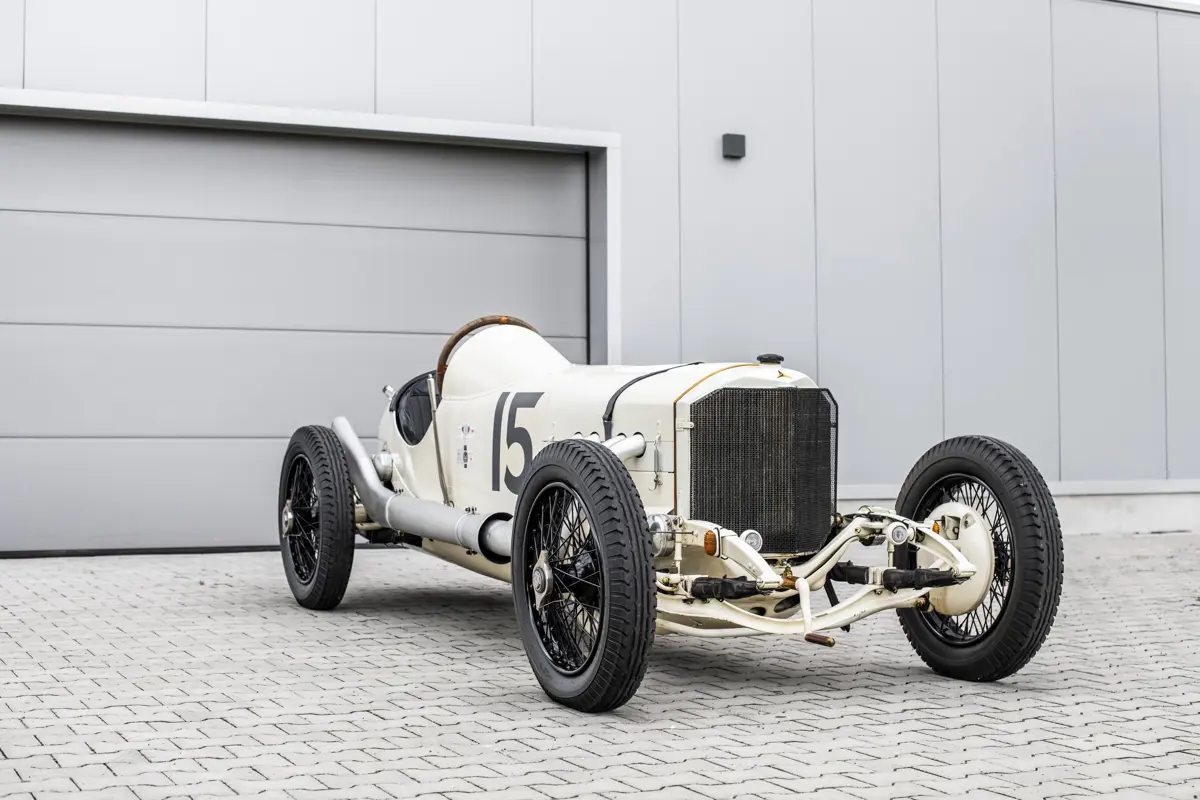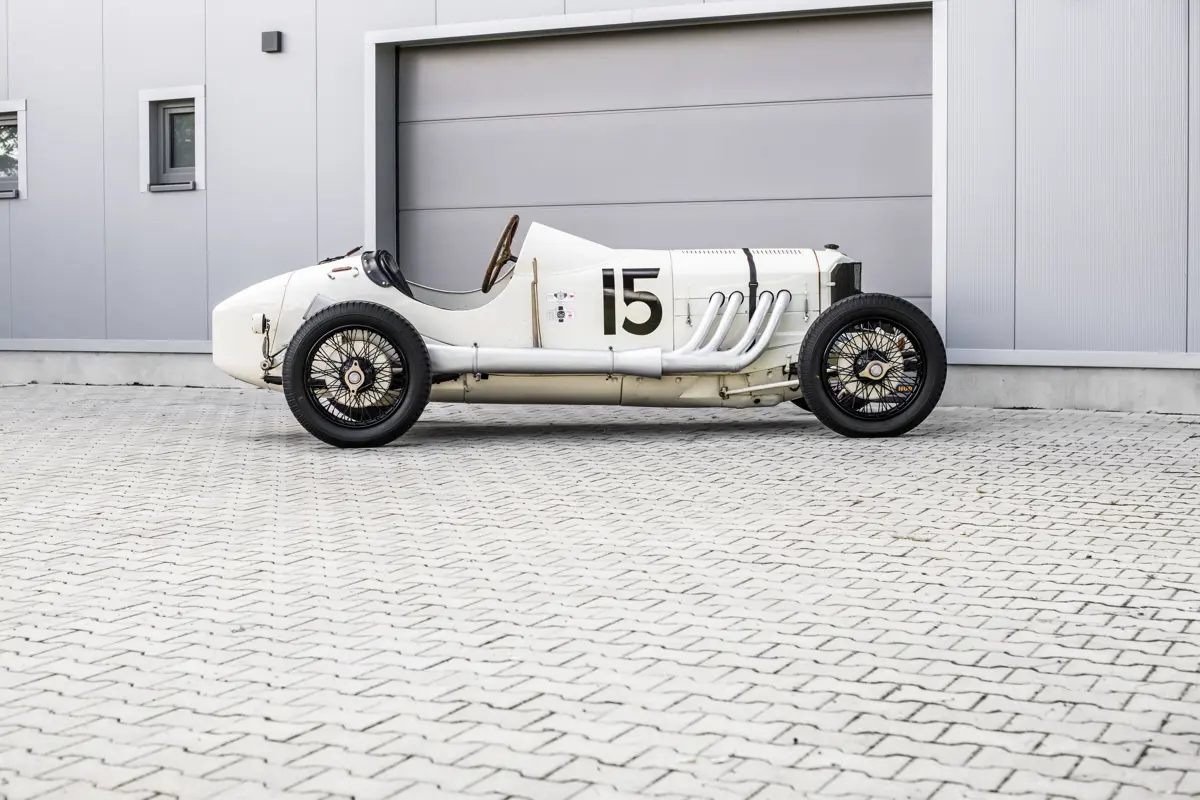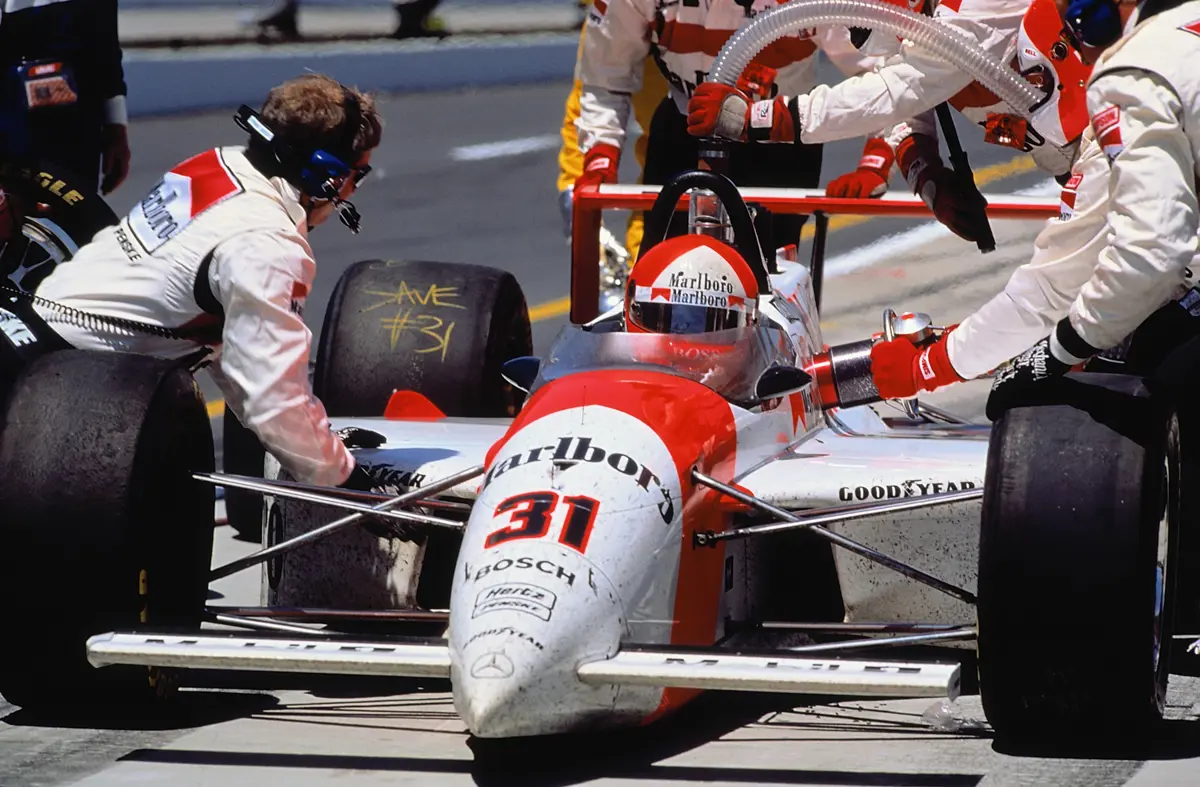For 123 years, the Indianapolis 500 has been the foremost open-wheel event in the USA—a race beloved far beyond the nation’s borders as a pinnacle contest in motorsport. The event is truly international, with drivers from across the world coming to test their mettle over 200 laps and 500 miles, while great engine manufacturers and chassis builders have all had noted success over the years.
Mercedes was right there, even before the start of the famed Indy 500. In 1909, the Indianapolis Motor Speedway played host to Barney Oldfield setting the fastest top speed of 83.1 mph over one mile in a time trial, and two years later two white Benzes lined up in the very first running of the Indy 500, alongside a grey-painted Mercedes. Spencer Wishart brought the Mercedes home 4th after a period out in front, while the Benzes came home 18th and 19th.
The following year could have been so very different—Wishart returned with his grey Mercedes, with another car for Ralph DePalma. For 196 of the 200 laps DePalma led the field, but then a connecting rod let go, putting a hole in the crankcase. The driver and his mechanic pushed the Mercedes back to the pits, cheered on by the roar of 80,000 fans, but they could only watch as Joe Dawson swept through to win in his National.
DePalma would eventually get the win that eluded him in the 1915 race, though it was far from simple. After a race-long battle with Dario Resta’s Peugeot, he somehow managed to maintain the lead right until the end—though again a connecting rod had broken. With a slick of oil pumping across the track, DePalma finally took the chequered flag.
Mercedes returned to Indianapolis in 1923 with a three-car team entered by Daimler Motoren Gesellshaft. At the time, German and Austrian car manufacturers were banned from taking part in the French Grand Prix and other Belgian and French events, though they were welcome in Italy and the USA.
The Mercedes Indianapolis was the result—and it is notable for being Paul Daimler’s final design for the company. A development of the 10/40/65 HP racing car, it would become the first supercharged car to be used in the Indy 500. The engine, which was directly mounted on the chassis, measured 2.0-litres in size and was based on the 1.5-litre and 2.6-litre four-cylinder vertical shaft engines. The 1.5-litre engine provided the inspiration for the 2.0-litre unit’s cylinder head and valvetrain, meaning the 2.0-litre engine had two overhead camshafts which actuated two intake and two exhaust valves per cylinder via tappets. It was also the first of these engines to be fitted with an oil cooler and with the crankshaft supported in roller bearings.
The engine was also novel in its construction—the cylinder and cylinder head were welded together for the first time in order to improve the reliability of the unit; supercharging meant the engine was subjected to high working pressures, which often led to burnt-out head gaskets. The result was an engine that could develop between 110 and 125 brake-horsepower, though later developments took this figure to around 150 brake-horsepower.
While the engine was fairly advanced for the time, the chassis took a more tried-and-tested approach, with two pressed steel U-shaped longitudinal members held together with bracing sections. Rigid axles were used front and rear, with semi-elliptic springs and friction dampers. To keep the body low, where the rear axle held the springs, the longitudinal rails cranked upwards and bent inwards at the back. The brakes were inboard shoes at each corner; during testing the wheels were covered in discs for better airflow, but this plan was soon abandoned. Regulations changes for the 1923 event did away with the need for a riding mechanic, but Mercedes chose to build the car as a two-seater, unlike many rivals.
The German giant sent four cars to Indianapolis, the first time it had entered cars of its own design to compete—and as of late 2024, that remains the case. The example you see above is chassis 26913, which was shipped to Indianapolis with the intention of being the spare car.
Saturday qualifying would change its fortunes, thanks to Max Sailer. He was the team’s chief engineer and lead driver, having taken a class victory at the 1921 Targa Florio. After damaging both his car and his wrist, Max’s nephew and reserve driver, Karl Sailer, was promoted to driving duties, qualifying on his uncle’s behalf in this very car.
The Type 122’s supercharged power delivery provided a significant handling challenge on the slippery Indianapolis surface—it was all or nothing, and you’d better be holding on tight when the power did come in. Starting on row seven, Max Sailer got chassis 26913 as high as 8th before handing over to his nephew, the strains of Indianapolis on Max’s sprained wrist proving too much to bear. Karl duly took on the challenge, maintaining 8th position until the end of the race—a not inconsiderable distance of 320 miles. With teammates Christian Lautenschlager crashing out after 14 laps, and Christian Werner finishing in 11th place after sharing driving duties with Max Sailer, it was the highest ranked Mercedes.
While the result wasn’t a resounding success, it was still the best finish for a European manufacturer, with Prince de Cystria’s Bugatti a further 15 minutes behind in 9th. Sailer would retire from racing in 1924, going on to head up Mercedes’ competitions department until Alfred Neubauer took over. He remained a Mercedes director until his death in 1964.
As for chassis 26913, it stayed in the USA and continued racing until 1951, whereupon it joined the collection of Henry Austin Clark Jr. at the Long Island Automotive Museum. Clark allowed Charles Addams—a New Yorker cartoonist and the creator of the Addams Family—to race it at Bridgehampton in 1952 and 1959. It was later sold to Lew Schaefer, before joining the Yoshiyuki Hayashi collection in Japan in 1978.
The car was briefly part of the Bernie Ecclestone collection before joining The Aumann Collection in 1996. Since then it has been displayed and driven at several events and rallies, and in 2011 received a full engine rebuild by the respected Capricorn Engineering. It’s estimated at between €3.8m and €5m – you can find out more about the car here.
For Mercedes, the result would keep it away from the event for 20 years—at least in an official sense. There was an attempt to get Rudolf Caracciola to race a Mercedes-Benz W 165 at the 1946 Indy 500, but when the car became stuck in Swiss customs, Caracciola, who had made the trip to Indiana, took the wheel of Joel Thorne’s "Big-Six" Thorne-Sparks racer. During a practice run the famed racer took a bird strike in the face and crashed hard into turn two, leaving him with a fractured skull.
It would take until 1994 before Mercedes-Benz would return to the Indy 500—and in winning form too. Penske Racing had contracted Ilmor to build a 3.4-litre V-8 pushrod engine, which was then badged as the Mercedes-Benz 500l. A loophole in the rules allowed slightly different regulations to the rest of the CART season; at the time USAC ran the Indy 500. This prompted Ilmor to develop the engine for the Indy 500 in secret, to be placed in the race-winning PC-23 chassis. It was revealed just before the star of the event and was rumoured to have a 150-200 brake-horsepower advantage over the opposition.
Practice week didn’t go smoothly, with Paul Tracy crashing at turn three on the Friday, forcing him to sit out the first day of pole qualifying. Al Unser Jr would eventually gain provisional pole in his PC23/Mercedes.
Come the race, however, Emerson Fittipaldi’s Penske PC-23/Mercedes would dominate, putting a lap on his teammate Al Unser Jr., Fittipaldi led for 145 laps. But, with 16 laps to go, the Brazilian drove over the inside rumble strips on turn four, unsettling the car and sending him into the wall and subsequently retirement. This handed victory to Unser Jr, who had been lucky to avoid an enormous pile up on lap 92.
The historic win would be the first and only victory for the Mercedes 500l engine, as the loophole that allowed its creation was closed for 1994. Penske continued with Ilmor V-8s, rebadged as Mercedes units, until the end of 1996. The Three-Pointed Star’s final Indy 500 came in 1995, though without success.
As of 2024, Mercedes-Benz has yet to return to the Indy 500, but open-wheeled Mercedes-powered cars have won there since. When Formula 1 came to Indianapolis between 2000 and 2007, McLaren-Mercedes notched up two victories: one for Mika Häkkinen in 2001 (his final GP win) and one for Lewis Hamilton in 2007.
The Indianapolis 500 remains the premiere open-wheeled race in the USA and Mercedes-Benz was there at the very start. While the Three-Pointed Star doesn’t currently have a representative in the event, maybe one day we’ll see the famous marque back in action at the Great Race. Until then, the magnificent Mercedes Indianapolis serves as a timely reminder of the dedication, innovation, and sheer determination required to take on the Indy 500.









